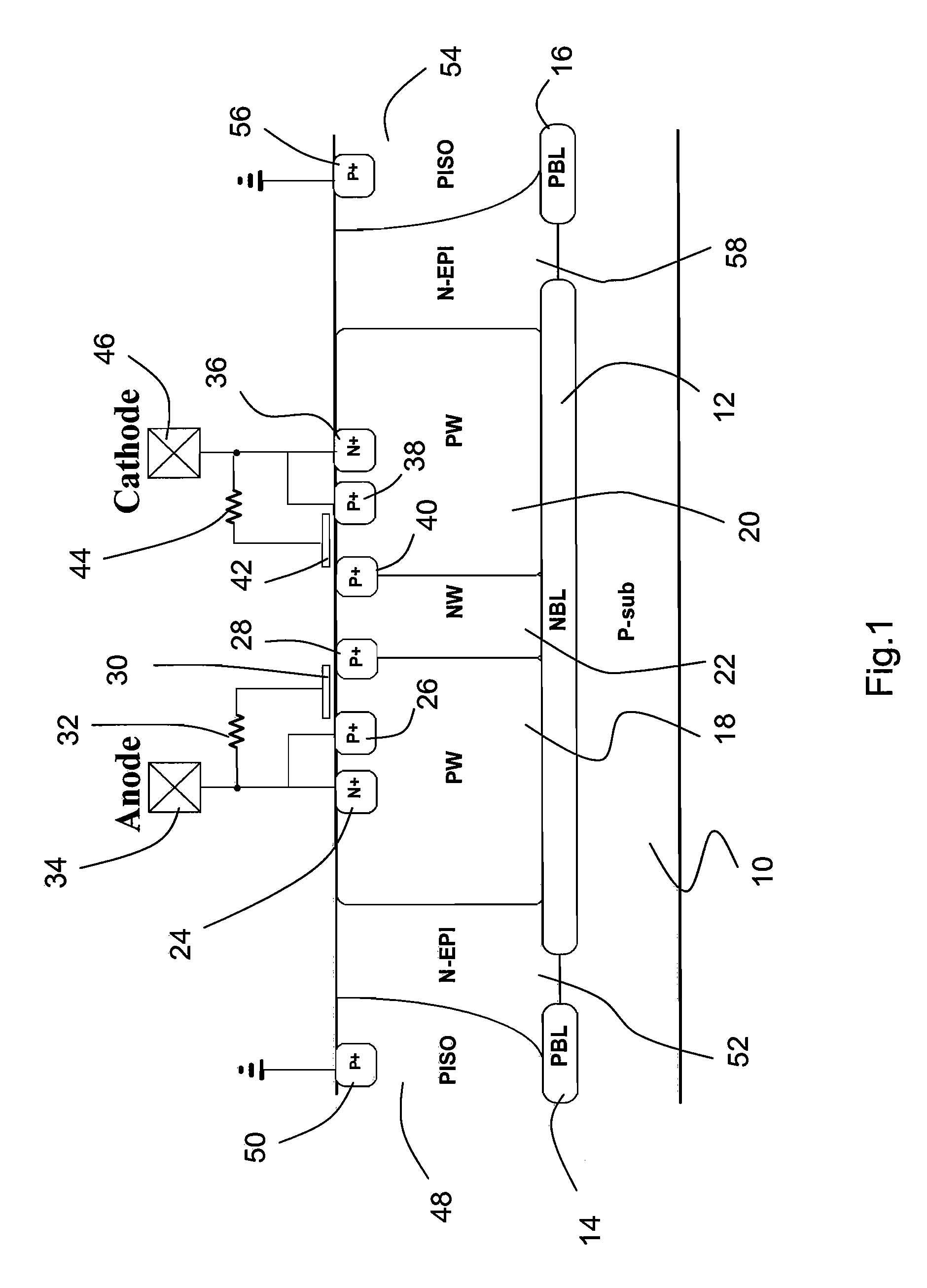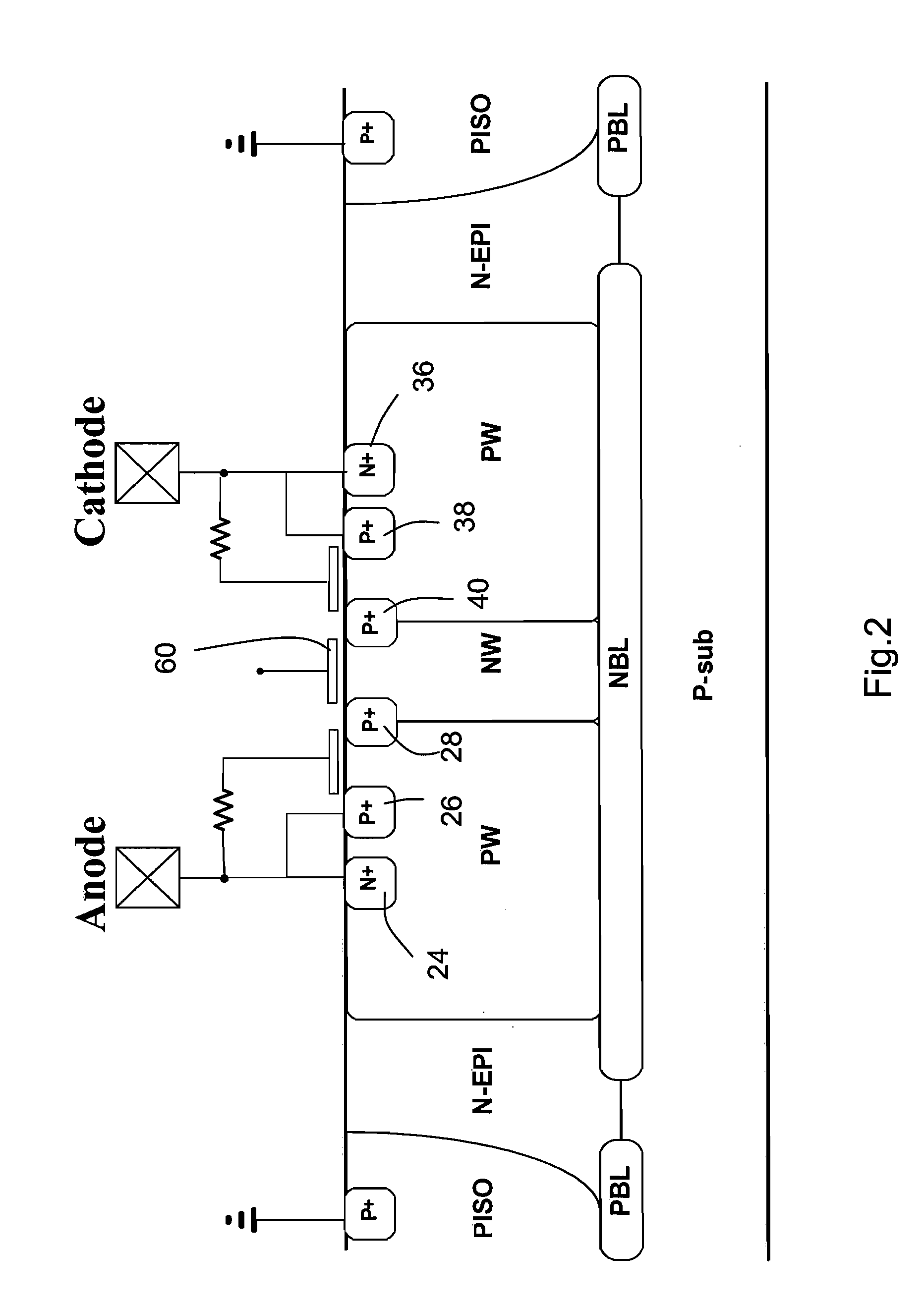Symmetric bidirectional silicon-controlled rectifier
- Summary
- Abstract
- Description
- Claims
- Application Information
AI Technical Summary
Benefits of technology
Problems solved by technology
Method used
Image
Examples
Embodiment Construction
[0023]Refer to FIG. 1 a diagram schematically showing an embodiment of a symmetric silicon-controlled rectifier according to the present invention. In this embodiment, the symmetric silicon-controlled rectifier of the present invention comprises: a P-type substrate 10; an N-type first buried layer 12 formed on the substrate 10; and P-type second and third buried layer 14 and 16 respectively formed at two sides of the first buried layer 12.
[0024]A P-type first well 18, a middle region 22 and a P-type second well 20 are side-by-side formed on the first buried layer 12. The middle region 22 is interposed between the first and second wells 18 and 20 and may be an undoped epitaxial region or an arbitrary N-type region, such as an N-type epitaxial region or an N-type well. An N-type first semiconductor area 24 and a P-type second semiconductor area 26 are both formed inside the first well 18. A P-type third semiconductor area 28 is formed in a junction between the first well 18 and the mi...
PUM
 Login to View More
Login to View More Abstract
Description
Claims
Application Information
 Login to View More
Login to View More - R&D
- Intellectual Property
- Life Sciences
- Materials
- Tech Scout
- Unparalleled Data Quality
- Higher Quality Content
- 60% Fewer Hallucinations
Browse by: Latest US Patents, China's latest patents, Technical Efficacy Thesaurus, Application Domain, Technology Topic, Popular Technical Reports.
© 2025 PatSnap. All rights reserved.Legal|Privacy policy|Modern Slavery Act Transparency Statement|Sitemap|About US| Contact US: help@patsnap.com



